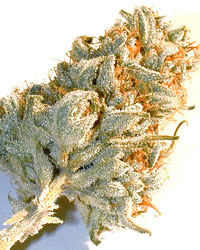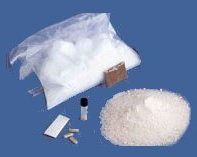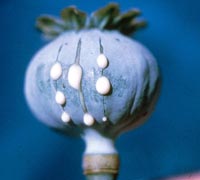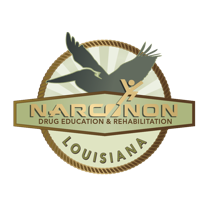Alabama Drug Rehab Centers
Alabama Drug Rehab Centers

Alabama’s unique culture breeds creativity. It also produces some fantastic cultural landmarks, such as the Alabama Shakespeare Festival, the sixth-largest Shakespeare festival in the world, which Variety called “an oasis of optimism and growth.”
With the wealth of cultural and geographical resources, one could say that Alabama was a paradise on earth. It would be, except for the scourge of drugs that exist in every level of society, accompanied by its attendant crime, death and drug addiction.
The Narconon Drug Rehab Program seeks to help individuals in Alabama by providing a drug rehab program that works.
Alabama Drug Information
Alabama is the thirtieth largest state in the United States with 52,423 square miles (135,775 km²) of total area: 3.19% of the area is water, making Alabama twenty-third in the amount of surface water, also giving it the second largest inland waterway system in the United States. About three-fifths of the land area is a gentle plain with a general descent towards the Mississippi River and the Gulf of Mexico. The North Alabama region is mostly mountainous, with the Alabama River cutting a large valley creating numerous creeks, streams, rivers, mountains, and lakes.
The drug threat in Alabama is the widespread availability and abuse of illegal drugs arriving from outside the state, along with its homegrown marijuana and the increasing danger of local manufacture of methamphetamine and designer drugs.
Conventional drugs such as cocaine, methamphetamine, and marijuana comprise the bulk of drugs arriving in and shipped through Alabama. Colombian, Mexican, and Caribbean Drug Trafficking Organizations (DTOs), regional DTOs, as well as local DTOs and casual or one-time traffickers are responsible for the transportation of these drugs. Additionally, Mexican, Caribbean and regional DTOs have extensive distribution networks within the State of Alabama.
Outlaw Motorcycle Gangs are also supplying methamphetamine on a very limited basis through their own distribution network within the state. Local production of methamphetamine is on the rise.
Prescription Drug Abuse

Hydrocodone was the most abused pharmaceutical drug in 2005. Other drugs commonly diverted and abused were Oxycontin and Vicodin. The average age of a first time user of an opiate drug is between 15 and 22. Alabama created a law to assist in curbing “doctor shopping” by implementing a Prescription Monitoring Program (PMP). Pharmaceuticals are transported into Alabama mostly by private vehicle. These drugs are also obtained through forged prescriptions and “doctor shopping.” An increasing problem is the obtaining of pharmaceutical drugs via the internet.
Source: White House Policy on Drugs
Drug Rehab Centers
Alabama
Detoxification is only the first step on the road of drug addiction treatment. Most drug rehab centers in alabama consider detoxification to be when the drug addict is no longer under the influence of the drug, but this is actually only withdrawal.
At Narconon Drug Rehab, which services all of Alabama, we have a very unique and effective detox procedure that actually rids the body of the old drug residues, which in turn eliminates physical cravings for the drugs and allows a person to feel much healthier mentally and physically.
This is called the Narconon New Life Detoxification Program and is part of Narconon Drug Rehab’s long-term treatment.
Common Drugs in Alabama
Marijuana

Marijuana is the most widely abused and available drug in Alabama. The large, rural areas in Alabama contribute heavily to the large quantities of marijuana produced in the state.
The Alabama Marijuana Eradication Program seized 91,614 plants in 2005. Mexican DTOs are responsible for the majority of bulk marijuana transported into the state. Local independent dealers and African American DTOs distribute marijuana in the local retail market.
Cocaine

Law Enforcement agencies throughout Alabama report cocaine closely behind methamphetamine, as a significant threat. Cocaine is widely available throughout the state.
Most of the cocaine is transported into Alabama from the Houston, Texas or Atlanta, Georgia areas. Wholesale distributors transport it into the state in its powder form, the majority of which is converted locally into crack.
DTOs responsible for transporting the cocaine into the state are mostly Mexican DTOs and to a lesser extent African American DTOs. The Mexican DTOs are responsible for transporting much larger loads of cocaine than the African American DTOs.
The northern and southern regions of Alabama are supplied mostly from sources of supply in Houston, Texas. The central part of the state receives most of its cocaine from Atlanta, Georgia.
Drugs of Abuse in Alabama
Methamphetamine

For the second year, methamphetamine has been identified by law enforcement as the number one drug threat in Alabama. Methamphetamine production in the state has seen a substantial decrease as a direct result of the restricting of psuedoehpedrine sales; however, it remains the most significant threat in Alabama as Mexican DTOs increased the total quantity available.
The number of methamphetamine labs seized in 2005 was approximately 20% fewer than in 2004. A more pure form of the drug known as “ice” has replaced the methamphetamine previously produced in the “mom and pop” labs in Alabama.
Virtually all of the methamphetamine coming into the state is brought in by Mexican DTOs from Mexico and Texas and distribution points in Atlanta, Georgia. There are independent dealers who obtain lesser amounts in Atlanta for personal use with a small amount for distribution to cover the expense of the drugs.
Signs of Methamphetamine Abuse
Heroin

Over the past year, the presence of heroin has increased. Heroin is available in certain areas of Mobile and Birmingham, as well as Montgomery and Auburn in limited quantities.
This information has been provided by confidential sources and substantiated by the increase in the number of patients in these areas admitted to clinics for treatment.
The number of patients has more than doubled in some areas. Heroin is transported into Alabama via private and commercial vehicles. At the present time, there is limited or no intelligence as to any specific organizations that are responsible for the distribution of heroin.
